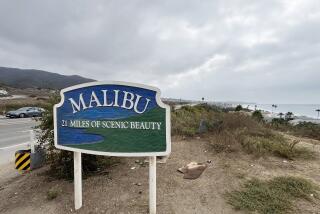At the Salton Sea, a warning sign of the Big One?
- Share via
Scientists are watching closely to see if small faults crossing under the Salton Sea are transferring energy to the larger, more dangerous San Andreas fault after a series of small quake swarms in the area.
The quakes appeared to be tapering off by Monday afternoon, according to the monitoring system run by the U.S. Geological Survey and Caltech. But in a 48-hour period starting Saturday morning, 42 quakes shook just south of Bombay Beach on the Salton Sea. The quakes ranged in magnitude from 0.5 to 3.3, with three larger than 3.0 hitting the area Saturday afternoon.
Scientists are particularly interested in the area because an earthquake that starts in Bombay Beach and ripples northwest along the San Andreas fault could be the Big One that devastates Los Angeles, said Graham Kent, a research geophysicist at UC San Diego.
These quakes appear to be taking place at the hazy intersection of several recently mapped faults crossing beneath the Salton Sea and the the San Andreas fault.
The worry for scientists comes from a case in 1987, when a magnitude-6.2 earthquake on one of the crossing faults appeared to trigger a 6.6 quake 12 hours later on the Superstition Hills fault to the south. The San Andreas fault is north of these crossing faults and the geometry is similar, Kent said.
This swarm, he said, “is a flashing yellow light that tells you to be prepared and to spend some time trying to understand the significance.”
These last time a swarm of this type occurred in the area was 2001, so they are not especially unusual, said Kate Hutton, a seismologist at Caltech.
Hutton said scientists do not yet know if quakes this small can trigger anything dangerous on the San Andreas.
“Every time you have a swarm of earthquakes, it does raise the chances of having a larger quake, but it doesn’t raise it a huge number,” she said.
--






